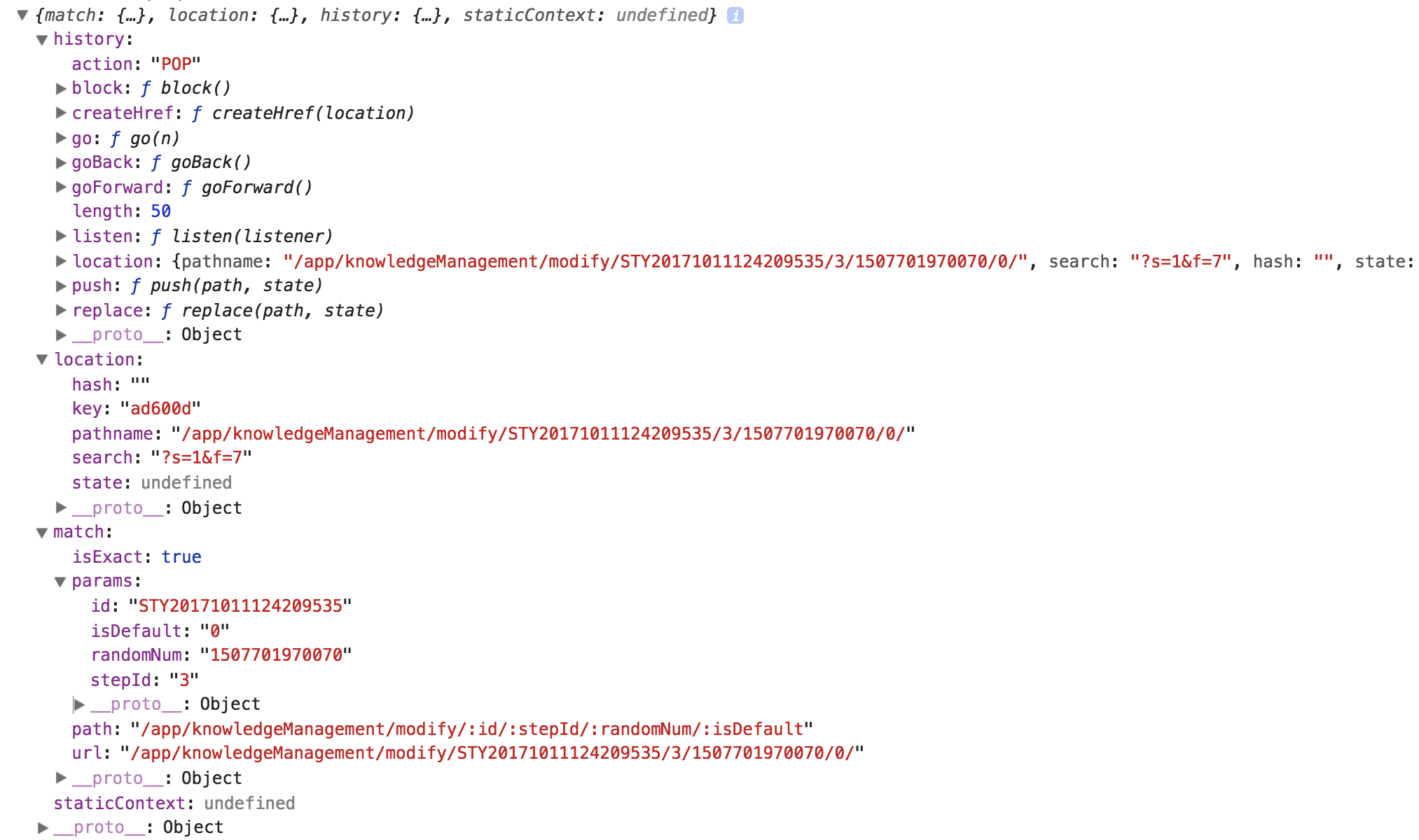在 react 组件的 componentDidMount 方法中打印一下 this.props,在浏览器控制台中查看输出如下:

其中页面的 url 信息全都包含在 match 字段中,以地址
localhost:3000/app/knowledgeManagement/modify/STY20171011124209535/3/1507701970070/0/?s=1&f=7
为例,其中各个参数定义对应如下:
localhost:3000/app/knowledgeManagement/modify/:studyNo/:stepId/:randomNum/:isDefault/?s=&f=
首先打印 this.props.match :

可以看到 this.props.match 中包含的 url 信息还是非常丰富的,其中
- history:包含了组件可以使用的各种路由系统的方法,常用的有 push 和 replace,两者都是跳转页面,但是 replace 不会引起页面的刷新,仅仅是改变 url。
- location:相当于URL 的对象形式表示,通过 search 字段可以获取到 url 中的 query 信息。(这里 state 的含义与 HTML5 history.pushState API 中的 state 对象一样。每个 URL 都会对应一个 state 对象,你可以在对象里存储数据,但这个数据却不会出现在 URL 中。实际上,数据被存在了 sessionStorage 中)(参考: 深入理解 react-router 路由系统)
- match:包含了具体的 url 信息,在 params 字段中可以获取到各个路由参数的值。
通过以上分析,获取 url 中的指定参数就十分简单了,下面是几个例子:
// localhost:3000/app/knowledgeManagement/modify/STY20171011124209535/3/1507701970070/0/?s=1&f=7 // localhost:3000/app/knowledgeManagement/modify/:studyNo/:stepId/:randomNum/:isDefault/?s=1&f=7 // 获取 studyNo this.props.match.match.params.studyNo // STY20171011124209535 // 获取 stepId this.props.match.match.params.stepId // 3 // 获取 success const query = this.props.match.location.search // '?s=1&f=7' const arr = query.split('&') // ['?s=', 'f=7'] const successCount = arr[0].substr(3) // '1' const failedCount = arr[1].substr(2) // '7'